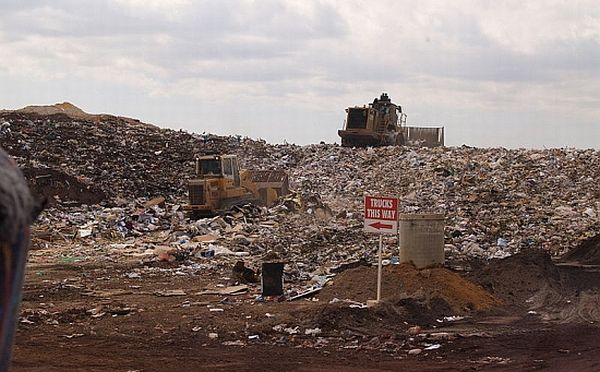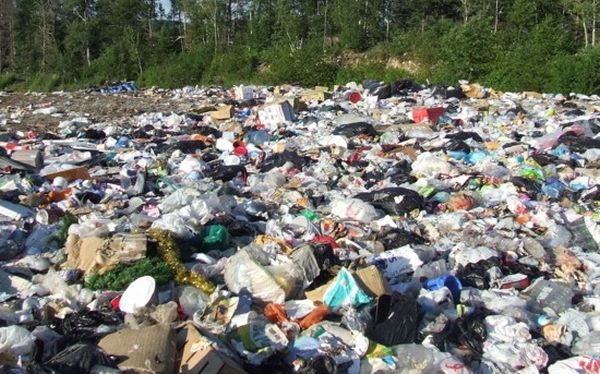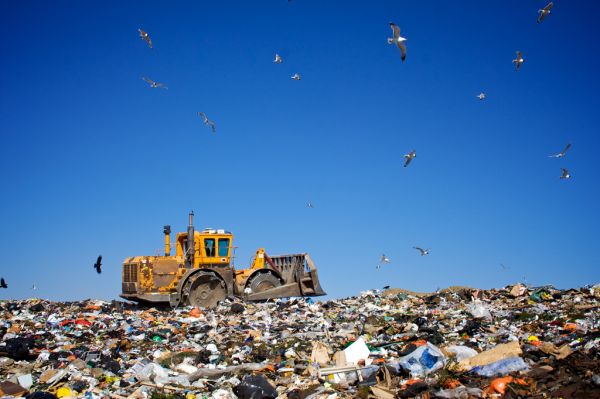
As we know it?
Historically, landfills have been the most common methods of organized waste disposal, and such ‘dumping grounds’ continue to thrive in many places around the world. But beneath their seemingly placid bearing, there is a melting pot of different chemical reactions taking place. Gases like methane (trash gas) are produced in landfills due to the anaerobic digestion by microbes. Organic wastes like grass trimmings, fallen tree branches or corn stalks can be utilized to create ethanol, which, in itself, is a fuel for heat and light, and more recently as a bio-fuel for internal combustion engines. Some landfills produce leachate, a liquid that oozes out of rotting material and can be used in production of fertilizers. So the landfills can be regarded as viable and abundant sources of energy, available for our future sustenance.
Need for change
Well, theoretically, landfills may seem to be a depot for under-utilized energy constituents. But on the other hand, considering the myriad of waste products that are being dumped, it sometimes becomes nigh impossible to sort out the intensity of chemical counteractions. One common example would be off-gassing of methane generated by decaying organic wastes. Now methane is a much more potent gas than carbon dioxide, and can prove to be extremely dangerous to the local inhabitants, if not controlled. Moreover, in many cases, burning trash for fuel might create the risk of toxins being released into the atmosphere and could also pollute the neighboring freshwater sources.
What’s Next?
1. World’s first landfill-powered hydrogen station to be built in South Korea

What’s New?
In an extraordinary move, the South Korean government had signed a MOU with SK Engineering & Construction and oil refiner SK Energy in 2009 to develop the world’s first hydrogen station in Nanjido that will be able to extract hydrogen from methane produced in landfills. The resultant methane can be chemically separated to produce a 99.9 percent pure form of hydrogen. This can, in turn, be utilized for advanced hydrogen fuel cells. Initially, for testing, two buses and two cars will be used. In a rather conscientious move, those two cars will be supplied by Hyundai (the world’s fifth largest automobile manufacturer by volume).
What difference will it make?
The hydrogen fuel may itself be environment friendly, but around 50 percent of hydrogen is still derived from natural gases and 20 percent from non-renewable fossil fuels. Moreover, there can be problems regarding storage of hydrogen. But, if this ambitious project is realized, then the infrastructure required for hydrogen production can come from the landfills itself. This can prove to be energy efficient as well as cost effective in the long run.
2. NY’s Ontario county looking toward landfills for clean fuel

What’s new?
New York’s Ontario County has envisaged a rather ambitiously mega proposal of investing a whopping $100 million for a total waste disposal and landfill system. And if it is realized, then Casella Waste Systems (a company which already operates a landfill in this area) will go forth with their $5 million pilot plant project that will generate methanol from the landfills.
What difference will it make?
According to Casella Waste Systems, with the huge amount of raw materials and technology they have at their disposal, they can surely contribute to producing around 100 gallons of methanol or diesel fuel for every hour the plant operates. Moreover, there is a significant potential for creation of ‘green’ jobs, and even generation of extra revenues from selling of methanol as a fuel.
3. Waste Management to produce fuel from garbage using plasma-gasification

What’s new?
Okay, the term may seem to be from the pages of a science fiction. ‘Plasma gasification’, however, involves plasma arcs to break organic materials into syngas (synthetic gas – a gas mixture that contains varying amounts of carbon monoxide and hydrogen). Syngas can further be processed in gas turbines to produce electricity or can also be converted into other fuels like gasoline and ethanol. Now, a collaboration of Houston-based Waste Management and InEnTec will make use of this new and advanced technology to produce fuels from landfill wastes.
What difference will it make?
The combined effects of electrical energy and the high temperatures in this process eliminate the production of dioxins and furans. This makes the process useful, especially in the cases of automobile shredder residue and medical waste, as the high temperature manages to incinerate them. Moreover, a portion of syngas may be used to run on site turbines to power the plasma torches and the feed system.




